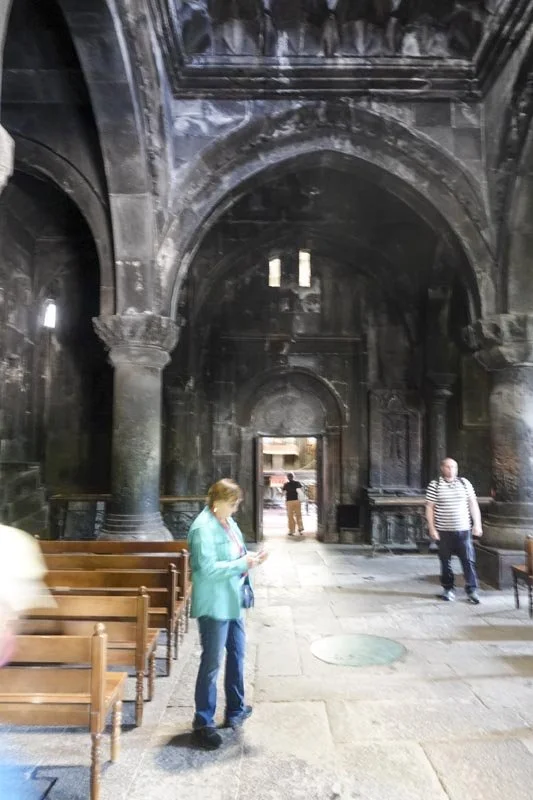Geghard Monastery
Geghard Monastery was our first visit on this day. It's east of Yerevan in the mountains and the Azat River gorge. This monastery complex was founded in the 4th century by Gregory the Illuminator at the site of a sacred spring inside a cave. It was originally called the Monastery of the Cave. The main chapel that we see today was built in 1215. The name Geghard (or Geghardavank) means the Monastery of the Spear. That originated from the lance or spear which had wounded Jesus at the Crucifixion, allegedly brought to Armenia by the Apostle Jude, here called Thaddeus, and stored here amongst many other relics. The spear was stored here for 500 years before being moved to Etchmiadzin.
Some of the churches in this monastery complex are entirely dug out of the cliff rocks while others are basically caves. I think that speaks to the age of the complex. Some walled sections and rooms are deep inside the cliff. We visited all the rooms that we could find and every room had a story about it's origins and uses and some rooms had complex uses.
The first photo shows the main church, built in 1215. It was undergoing some repairs. The second photo shows some other church or building and you can see that it's built into the mountain and perhaps was a cave originally.
Going inside the main church, first you enter the rock-attached vestry, or gavit in Armenian. It has massive free-standing columns to support a stone roof with a hole in the center to admit light. The dome in the center is a stalactite vault. The vestry was used for teaching and meetings, and for receiving pilgrims and visitors.
The main church of the complex was traditional in most respects. It is built against the mountain, which is not exposed in the interior. I noticed that there was no seating in the main church. It was only for standing and not for very many people at that.
We visited many other rooms in the complex. The next photo is the Upper Zhamatun which was the tomb of Papak Proshyan and his wife Ruzekana. It was hewn in 1288. There were also other tombs within the complex. This chamber had extraordinary acoustics and we were treated to a private concert. The sounds and hymns that these ladies sung were truly inspiring. It was a real highlight event.
There was really a lot to see on the church and inside the church if you took the time to study the walls. Our guide was a big help as he knew what to look for and what it meant.
Today just seemed like a tie-dye day to us. And for the first time on our travels, I think we were infectious! Can you imagine that?









